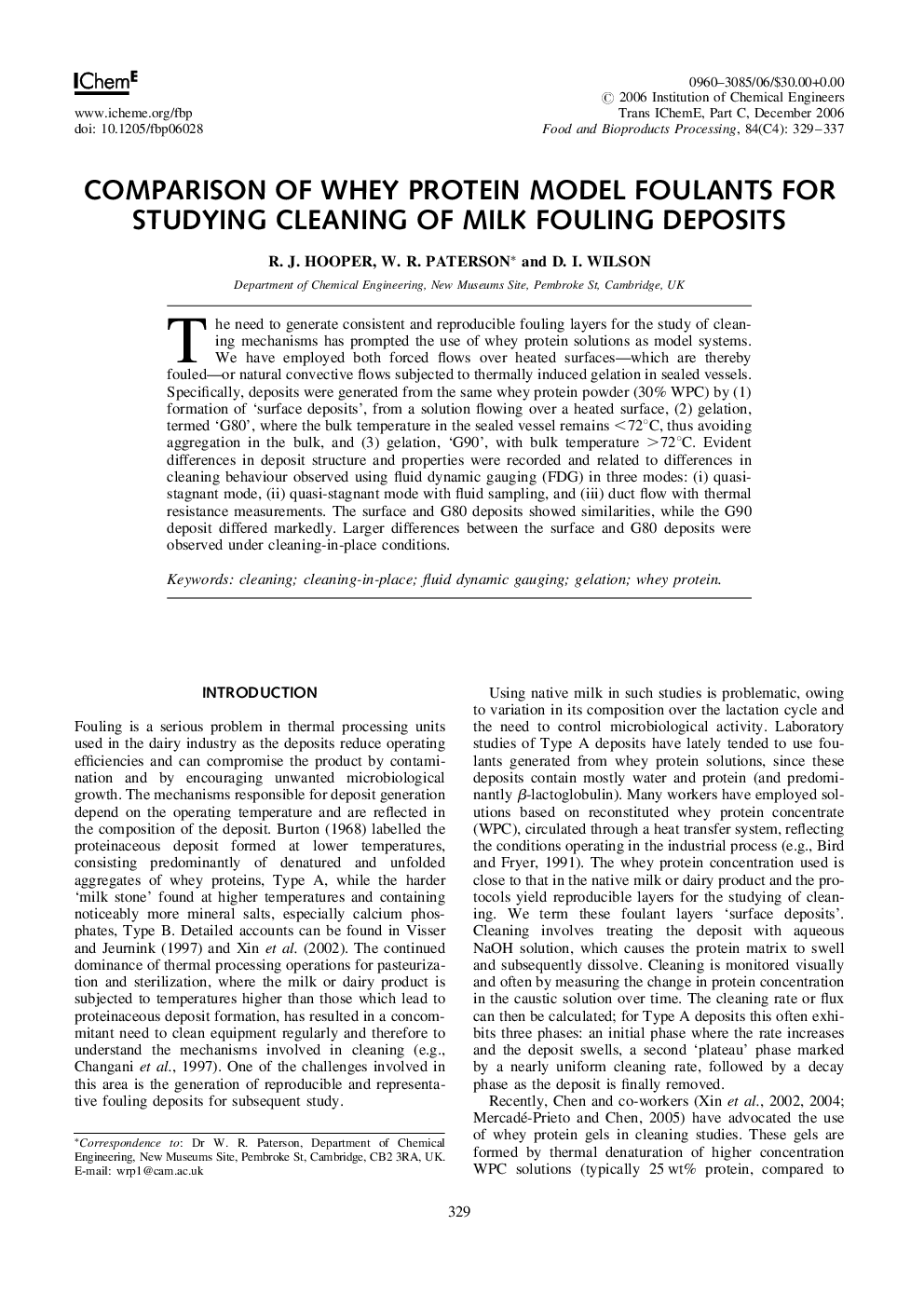| کد مقاله | کد نشریه | سال انتشار | مقاله انگلیسی | نسخه تمام متن |
|---|---|---|---|---|
| 19588 | 43078 | 2006 | 9 صفحه PDF | دانلود رایگان |

The need to generate consistent and reproducible fouling layers for the study of cleaning mechanisms has prompted the use of whey protein solutions as model systems. We have employed both forced flows over heated surfaces—which are thereby fouled—or natural convective flows subjected to thermally induced gelation in sealed vessels. Specifically, deposits were generated from the same whey protein powder (30% WPC) by (1) formation of ‘surface deposits’, from a solution flowing over a heated surface, (2) gelation, termed ‘G80’, where the bulk temperature in the sealed vessel remains <72°C, thus avoiding aggregation in the bulk, and (3) gelation, ‘G90’, with bulk temperature 72°>C. Evident differences in deposit structure and properties were recorded and related to differences in cleaning behaviour observed using fluid dynamic gauging (FDG) in three modes: (i) quasi-stagnant mode, (ii) quasi-stagnant mode with fluid sampling, and (iii) duct flow with thermal resistance measurements. The surface and G80 deposits showed similarities, while the G90 deposit differed markedly. Larger differences between the surface and G80 deposits were observed under cleaning-in-place conditions.
Journal: Food and Bioproducts Processing - Volume 84, Issue 4, December 2006, Pages 329-337